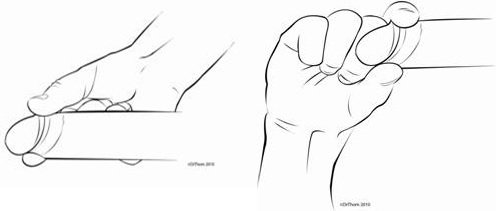Behavioral Techniques to Treat Premature Ejaculation Naturally

Premature ejaculation (PE) is one of the most common sexual concerns among men. It can lead to frustration, anxiety, and reduced sexual satisfaction for both partners. Fortunately, there are several effective behavioral techniques that can help men delay ejaculation and regain confidence during sex — without the need for medication.

In this article, we’ll explore the best self-help methods to stop premature ejaculation naturally, including step-by-step guidance on how to use each technique correctly.
?What Are Behavioral Techniques for Premature Ejaculation
Behavioral techniques, also known as self-control methods, are non-medical strategies designed to help men improve their sexual stamina and delay ejaculation. These methods focus on physical awareness, mental control, and practice — often with the support of a partner.
The Squeeze Technique
Goal of the Squeeze Technique
The purpose of this method is to help men recognize the “point of no return” — the moment when ejaculation becomes unavoidable. By applying pressure to the penis at this critical point, ejaculation can be delayed and controlled over time.
How to Perform the Squeeze Technique
- Just before ejaculation, apply firm but gentle pressure to the head (glans) of the penis for about 10–20 seconds.
- Use your thumb and forefinger to squeeze the shaft just below the head.
- Wait around 30 seconds until the urge to ejaculate decreases, then resume stimulation.
- Repeat this process 2–3 times during intercourse before allowing ejaculation to happen.
- Practicing this technique during masturbation can help you become more familiar with your arousal levels.
The Stop-Start Technique
Goal of the Stop-Start Technique
This method helps you build awareness and control by stopping sexual activity just before reaching climax, allowing arousal to subside before resuming stimulation.
How to Practice the Stop-Start Technique
- During sex or solo stimulation, stop all activity when you feel close to climax.
- Wait until the urge to ejaculate passes, then start again.
- Repeat the cycle several times before allowing ejaculation.
- Over time, this technique can help increase endurance and sexual confidence.
Kegel Exercises for Men (Pelvic Floor Exercises)
Kegel exercises strengthen the pelvic floor muscles, which play a vital role in controlling ejaculation.
How to Do Kegel Exercises
- Identify the muscles you use to stop urination midstream — these are your pelvic floor muscles.
- Contract these muscles for 3–5 seconds, then relax for the same duration.
- Repeat 10–15 times, three times a day.
- With consistent practice, Kegels can improve ejaculatory control and sexual function.
Masturbation Before Sex
Masturbating 1–2 hours before intercourse can reduce sexual tension and help delay ejaculation.
Tip: Always masturbate in a calm, private setting. Rushing or feeling anxious during the process can increase sensitivity and reduce its effectiveness.
Psychological Therapy and Counseling
In some cases, premature ejaculation is linked to psychological factors such as stress, anxiety, or past sexual trauma. Speaking with a therapist — either individually or with your partner — can help address underlying issues and develop long-term coping strategies.
?What If Behavioral Techniques Don’t Work
If you’ve tried these self-help methods and haven’t seen improvement, don’t panic. PE is common and often treatable. It’s important to identify the root cause of the problem — whether it’s physical, psychological, or both — and choose a treatment plan accordingly.
Medical Treatments for Premature Ejaculation
1. EMLA Cream
- A topical anesthetic cream applied to the penis to reduce sensation and help delay ejaculation.
2. Priligy (Dapoxetine)
- An oral tablet that increases serotonin levels in the brain, helping to delay ejaculation.
While these medications are not permanent cures, combining them with behavioral techniques often produces better, long-lasting results.
:Conclusion
Treating premature ejaculation naturally is possible with the right techniques and consistency. Behavioral methods like the squeeze technique, stop-start exercises, and pelvic floor training can significantly improve sexual control and confidence. If these strategies don’t work for you, consider speaking with a healthcare provider about additional treatment options.


